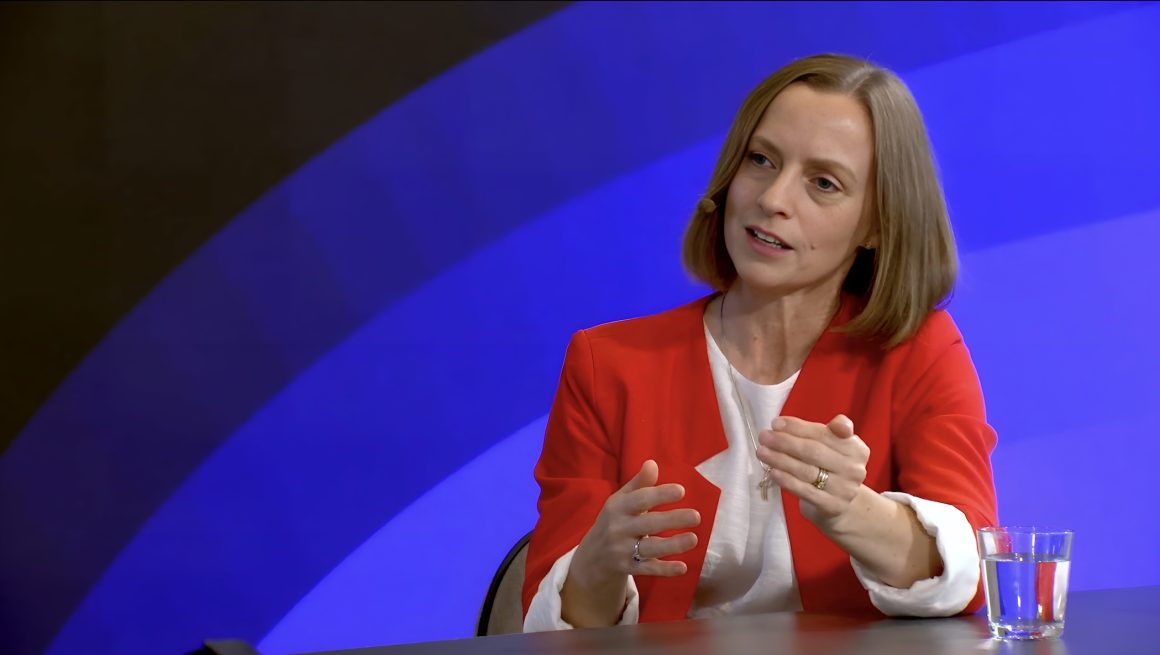Some people look daggers at 6G. Not Marie Hogan.
Hogan spent almost three decades leading the Broadband and IoT product area before becoming Head of 6G Portfolio Strategy at Ericsson in 2022. It was quite a change for her.
“We were building up a very large customer base, things were very stable in standardisation, and devices were available for 5G,” she said in an interview to TelcoForge during MWC 25 in Barcelona.
“When I moved to 6G, it was an even earlier stage, with a lot of disjointed concepts in some cases and different topics discussed in academia. It’s quite a different mindset trying to shape what we want to do instead of working with what is already, to a certain extent, shaped.”
Three years later, Hogan says she still “loves it.” Part of her excitement comes from the opportunity to build the foundations of tomorrow’s connectivity. As she puts it, we’re living in interactive times, when technology and research are becoming more stable and solid.
Still, there’s a lot of work ahead. “We haven’t even started standardisation. Right now, we’re working with key principles, quantifying the benefits of the technology potential and trying to bring some value,” she added.
Road to the (Kind of) Unknown
In a 2022 blog post, Hogan broke down several of the 6G’s expected capabilities and challenges. The article, written in collaboration with Ericsson’s Magnus Frodigh and Patrik Persson, outlined use cases, spectrum opportunities, and regulatory issues.
Has much changed since then? Or has time proved their vision right?
“Some things have remained the same, and some things, I think, have moved in or out over time, depending on the discussions we’ve had in the market with all the ecosystem players,” she reflected. “From partners to competitors to customers or new players even as well.”
One of the assumptions that moved out is spectrum. If the earliest 6G white papers were adamant about using sub-Terahertz frequencies, now researchers consider bands such as centimetre and millimetre waves as most likely candidates for the first stage of deployments. More specifically, the range between 7 and 15 GHz.
Another thing the industry has understood over time is that there seems to be a real need for the next G – less because of the hype, more because of some 5G restrictions, Hogan observed.
“At a certain point, the specifications for 5G become constrained. For example, uplink. We clearly see growth in the uplink demand. So one big focus area for us is to see how we can address that,” she said.
It’s not a matter of just adding a lot more spectrum because, according to Hogan, that’s not a luxury we will have with 6G. The questions we need to ask are different.
“Can we make it 20% or 30% more energy efficient, for example? Can we make the uplink better? Can we have optimised spectrum utilisation? Maybe, sometimes, the downlink in one band is better with an uplink from another band. So it’s evolving the things that we can improve, such as faster access to data, among others.”
From a portfolio perspective, there are also new capabilities. Integrated sensing and communication, for example, is on Ericsson’s radar. Sensing, detecting, and locating an object that’s not connected is one of the possible directions to take in research. Network APIs are worth a mention as well.
However, as important as establishing what 6G will be is defining what it will not. “We don’t want 6G to be a rip-and-replace of everything, and we don’t want 6G to change everything for the sake of making a change. We want to ensure we build something that brings real benefits and is needed at a certain point in time,” she pointed out.
6G Five Years From Now
There has been a debate about whether we should see 6G commercially available – and perhaps in the early stages of deployment – by 2030. Some companies have taken a step further and set 2028 as the target.
Marie Hogan takes a different road. She knows that some big players in telecoms have no appetite for throwing everything away to embrace 6G. Actually, the adoption of the next G might be considerably slower than initially thought.
“We need to remember that 6G is not competing with 5G right now at all. It is a completely different pre-standardization discussion. If we want 6G in 2030 or 2035, we need to start talking now about how we want to make it look. Then you can adopt it in your customer network in 2033, 2035, 2037,” she said.
Despite all the unanswered questions and some hesitation from the industry, Hogan believes there is real value in moving towards 6G. New capabilities, fewer restrictions, novel use cases. And one last piece of advice from her.
“We shouldn’t be afraid of 6G.”



